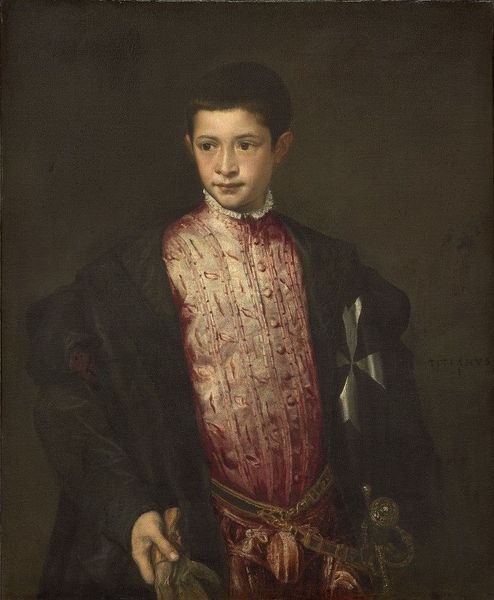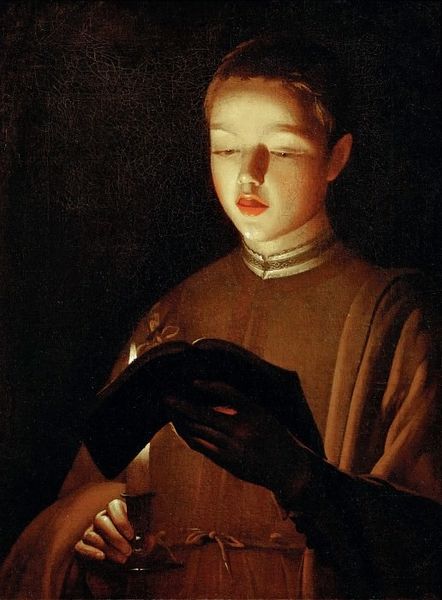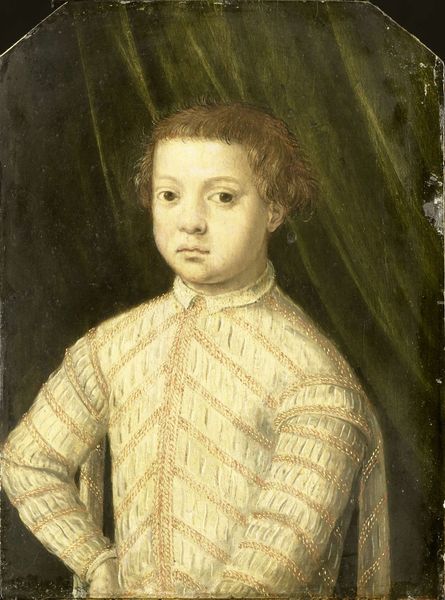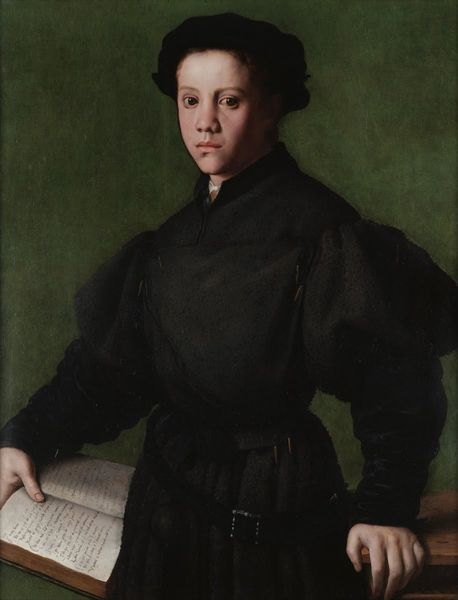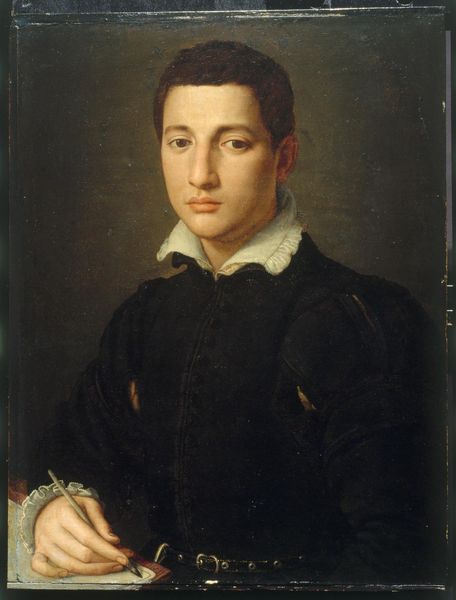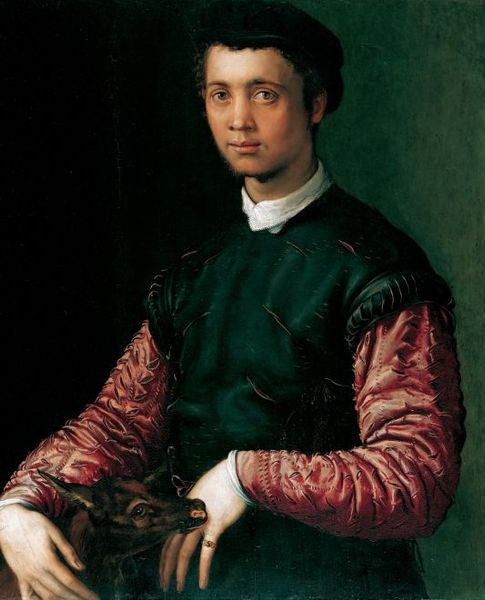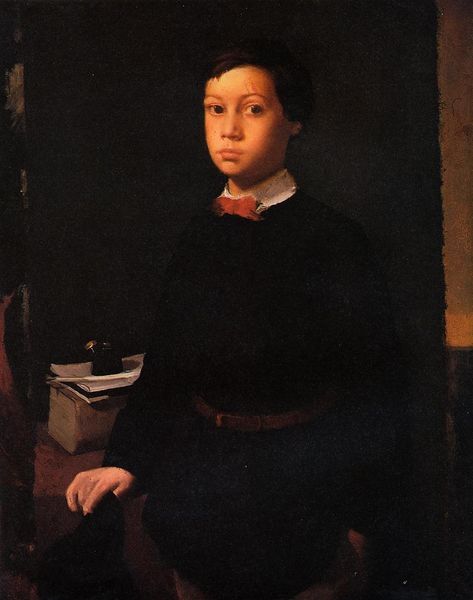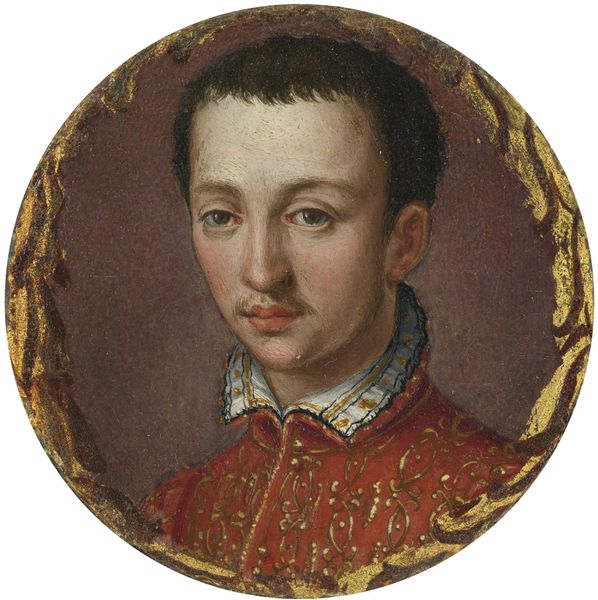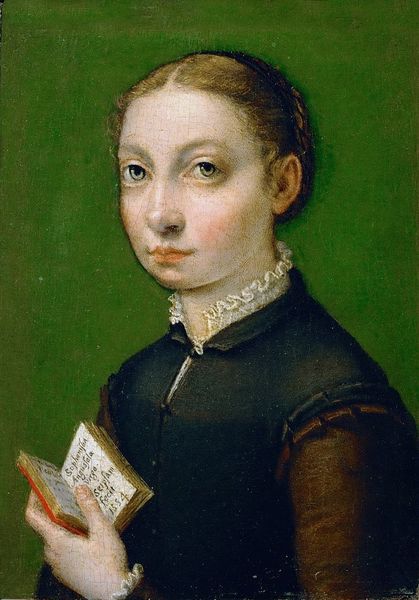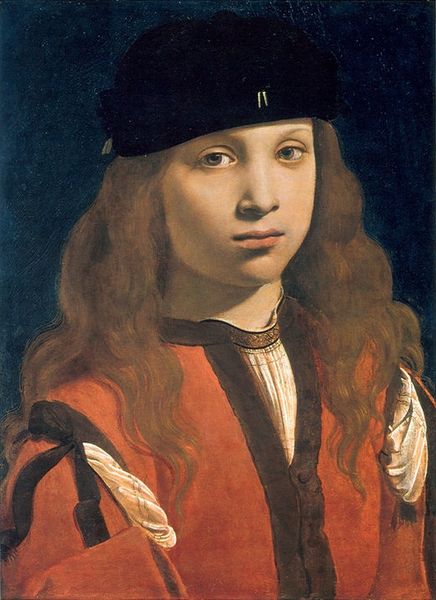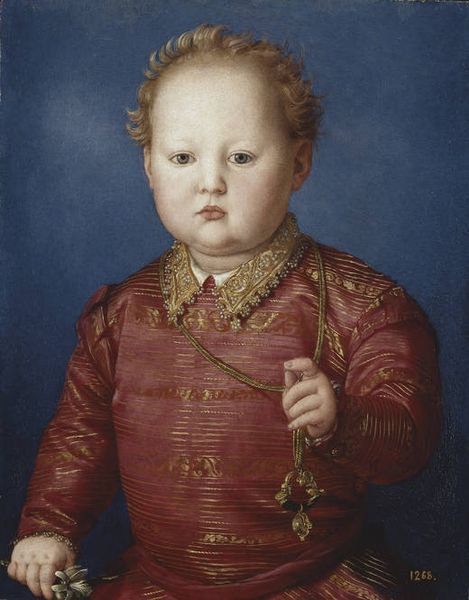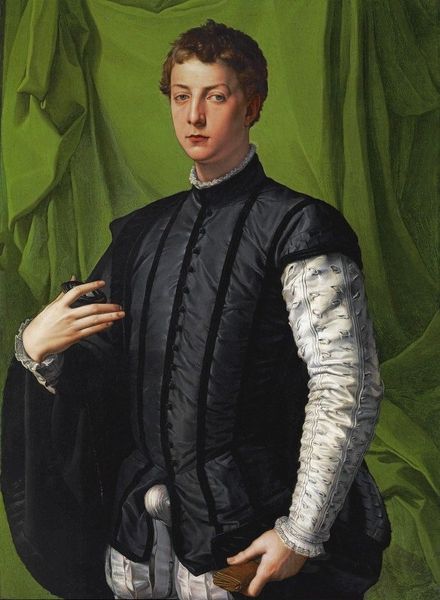
painting, oil-paint
#
portrait
#
painting
#
oil-paint
#
mannerism
#
figuration
#
11_renaissance
#
history-painting
#
italian-renaissance
Dimensions: 41.5 x 58.5 cm
Copyright: Public domain
Editor: This is Agnolo Bronzino's "Portrait of Francesco I de' Medici," painted in 1551. It's quite striking; the detail in the fabrics is incredible and, and that blank piece of paper, adds such mystery to the painting. What jumps out at you when you look at it? Curator: The interplay of textures and forms is paramount. Observe the contrast between the smooth, almost porcelain, skin of Francesco, and the intricate, heavily textured fabric of his garment. The painting compels an analysis of Mannerist style—exaggerated elegance through elongated lines, refined details, and a certain artificiality. Editor: Artificiality? How so? Curator: Note the figure's pose. The flatness of the picture plane. See how the light doesn't fall naturally; it's as if light is used to model form rather than suggest depth. How the rendering of fabric becomes almost an abstract element unto itself. Look at the sinuous lines that pattern the garment. Do you agree the semiotics here prioritize the artifice of design, more than any representation of reality? Editor: I see your point. The surfaces seem more important than the person somehow. Does that diminish its effectiveness as a portrait? Curator: Not necessarily. It speaks more to the artist's concept, than it does about historical narrative. If you focus purely on subject matter, you can get misled as to artistic intent. I would never reduce the semiotic message to the historical relevance, of Francesco's place within his noble family. Instead the viewer is prompted to interpret this portrait, more as an exploration of aesthetics rather than a representation of truth. What are your impressions now? Editor: I'll certainly be paying more attention to line and form when looking at portraits. I was ready to see it purely in the context of Florentine history, but now I can appreciate its design, and use of symbolism as well. Curator: Indeed. By engaging with the visual elements, you open up the artwork and appreciate the artist's intentions more thoroughly.
Comments
No comments
Be the first to comment and join the conversation on the ultimate creative platform.

